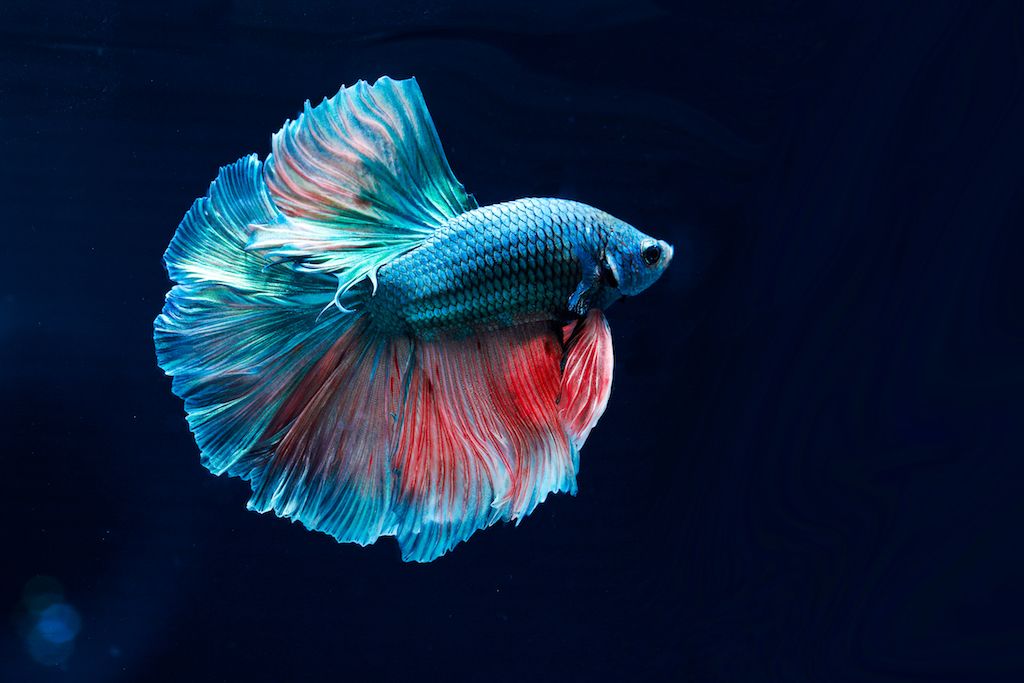Betta Fish Tank Setup: A Step-by-Step Guide for Beginners
Betta Fish Tank Setup: A Step-by-Step Guide for Beginners
Blog Article
Breeding Betta Fish: a Comprehensive Step-By-Step Guide to Effectively Raising Baby Bettas From Eggs to Their Adult Years
Reproducing Betta fish is a thorough undertaking that requires careful planning and implementation to make sure the successful growth of fry from eggs to mature fish. As the male Betta vigilantly constructs a bubble nest and guards the priceless eggs, the subsequent phases of care and change need attention to detail and expertise of finest techniques.

Selecting Breeding Pairs
When starting the trip of breeding Betta fish, choosing the best breeding pairs is essential to achieving desirable characteristics and a healthy and balanced lineage - betta fish. The primary step in this procedure is to identify the specific characteristics you desire to enhance or protect, such as shade, fin kind, and physique. It is necessary to pick genetically varied pairs to stay clear of inbreeding, which can result in health and wellness concerns and unfavorable qualities
Evaluate possible breeding candidates carefully. A healthy male Betta must display vivid shades, an energetic behavior, and well-formed fins, while the lady needs to also display dynamic coloration and a rounded belly, indicating readiness for spawning. Observing the personality of both fish is vital, as aggressive or overly shy individuals might not breed efficiently.
Maintaining records of the parent fish's origins can help you track genetic qualities and possible problems. Eventually, spending time in the choice procedure will substantially enhance the probability of producing strong, lively offspring that satisfy your breeding goals.

Preparing the Breeding Storage Tank
Creating an optimum reproduction setting is a crucial step after choosing ideal pairs for Betta fish. The reproduction container should be specifically designed to offer convenience and stimulate the natural breeding habits of the fish. Begin with a tank dimension of at least 10 gallons to ensure sufficient space for both the man and women Bettas.
Preserve a mild filtering system to maintain the water tidy while staying clear of solid currents that can worry the fish. Furthermore, an air stone can be contributed to supply oxygenation without interfering with the water surface way too much.
Temperature regulation is crucial; aim for a secure range of 78-82 ° F(25-28 ° C) using a dependable heating unit. The pH level must be maintained between 6.5 and 7.5, and regular water changes are necessary to guarantee high water top quality.
Incorporate drifting plants or spawning sponges to create concealing places for the lady, while additionally encouraging bubble nest building by the male - betta fish. Lastly, guarantee imp source the container is free from sharp designs and any type of prospective hazards, as the welfare of the fish need to constantly be prioritized throughout this important phase of breeding.
The Breeding Process
Generally, the breeding procedure for Betta fish entails a series of unique and observable behaviors that show preparedness for reproduction. The male Betta begins by developing a bubble nest at the water's surface area, which offers as a website for the fertilized eggs. This nest is critical, as it provides a risk-free setting for the eggs until they hatch.
Once the nest is developed, the man will certainly show courtship behaviors, such as flaring his fins and showing lively shades to draw in the female. The lady, upon picking up the male's preparedness, will certainly respond by displaying upright red stripes along her body, additional reading signaling her receptiveness.
The fed eggs then fall to the bubble nest, where the male meticulously accumulates and returns them to the nest. Following this, the male assumes obligation for guarding the nest and making certain the safety of the eggs until they hatch out, commonly within 24-36 hours.
Caring for Betta Fry
Caring for Betta fry needs cautious interest to their environment and nourishment to make certain healthy and balanced development and growth. After hatching, Betta fry are exceptionally small and susceptible, requiring a steady and tidy environment.
Feeding Betta fry is just as important. Feed them tiny amounts a number of times a day, being cautious not to overfeed, which can lead to water top quality problems.
Transitioning to Adult Bettas
As Betta fry fully grown, transitioning them to grown-up Bettas is an essential phase that needs careful administration of their environment and social interactions. This process typically starts when the fry reach around six weeks of age, whereupon they can be gradually presented to additional info a more organized living atmosphere.
To facilitate this change, it is important to guarantee that the water criteria-- such as temperature level, pH, and ammonia degrees-- are optimal and steady. Grown-up Betta fish thrive in cozy water (around 78-80 ° F) with a pH of 6.5 to 7.5. Gradually adjust the fry to these conditions to reduce anxiety.
Social interactions are another key aspect; man Bettas are notoriously territorial and aggressive. As a result, it is recommended to separate men right into specific containers as they mature. Women Bettas can be housed with each other, but care must be required to monitor for indications of aggressiveness.
Furthermore, nutritional changes need to be made as the fry expand. Include top quality pellets and live foods to sustain their growth and health and wellness. By taking care of these factors successfully, you can advertise a successful change to their adult years for your Betta fish.

Verdict
Successful reproduction of Betta fish calls for cautious focus to detail throughout the whole process, from choosing genetically diverse pairs to providing optimal care for fry. By ensuring suitable reproduction conditions and preserving water top quality, the chance of healthy and balanced offspring boosts significantly. Additionally, a balanced diet and gradual adjustment to grown-up settings are vital for the growth and development of Betta fish. Adhering to these steps faithfully fosters a flourishing populace of Betta fish, boosting both their health and wellness and vigor.
Report this page